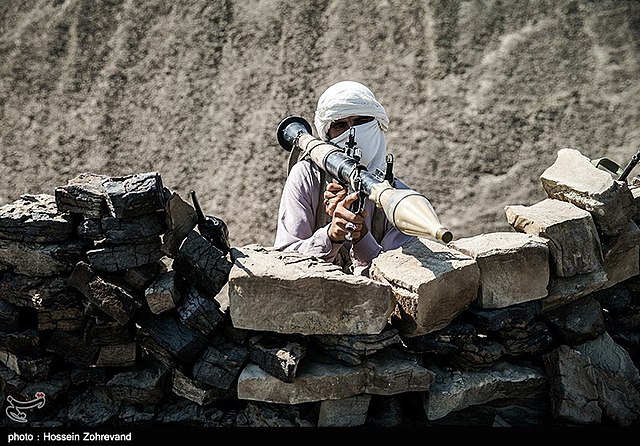By Sameer Hoth
A fractured Baloch armed group apparently killed eight Pakistanis in a restive southeastern border area of Iran, Pakistan confirmed early Sunday morning. The victims were soft targets residing in a remote, dusty village who ran a car repair workshop.
There has been an uptick in violence on both sides of the border, Iran and Pakistani Balochistan despite efforts by the two countries to mend ties after tit-for-tat attacks in January last year.
The Saturday attack appeared to target an easy location: the remote village of Hizabad Paein, around three miles from Meherestan city. Attacks on foreign nationals especially Pakistanis are rare on Iranian soil. In the past, ethnic Baloch who had crossed the border into Iranian Baloch areas due to security concerns have been targeted, allegedly for their links with the Baloch separatist movement in Pakistan. However, targeted killings of Punjabis, Pakistan’s largest ethnic group from the eastern province of Punjab on Iranian soil are unprecedented. This is only the second such attack since last year.
So, who is behind these attacks, and why are Punjabis being targeted on Iranian soil now, and not before?
While Punjabis have been under attack in Pakistani Balochistan since the early 2000s, such incidents have not previously occurred in Iran. The Baloch Nationalist Army (BNA), a fractured militant group, claimed responsibility for the recent attack.
The BNA fractured after the reported arrest (or possible staged surrender) of its top leader, Gulzar Imam Shambe, in Turkey in April 2022, followed by his reported extradition to Pakistan. Soon after, his key ally and co-founder Sarfaraz Bangulzai also surrendered. Leaderless, the BNA never more than 200-to-300-foot soldiers splintered into three groups.
One group joined the Balochistan Liberation Front (BLF), a separatist group seeking independence from Pakistan. The second group, composed of disillusioned fighters unhappy with the BLF and its alliance under Baloch Raaji Aajoi Sangar (BRAS) for failing to investigate Gulzar’s alleged arrest impartially, shifted loyalty to the Balochistan Liberation Army (BLA Azad). BLA is itself divided: one faction is led by former student-turned-guerilla leader Bashir Zaib and the other is allegedly by London-based Hyrbyar Marri. BLA Azad, unlike other separatist groups, also calls for the independence of Iran’s Sistan-Baluchestan province as part of a ‘Greater Balochistan’. Other pro-independence groups, in contrast, have remained largely silent on Iranian Balochistan.
Saturday’s attack may have been the work of BLA Azad and remnants of the fractured BNA.
The third group, composed of surrendered fighters, integrated into the Pakistani state apparatus. One weaker but not implausible hypothesis suggests this group may have orchestrated the attack. Given Gulzar Imam’s extensive experience operating in Iran, this faction may possess deep knowledge of Iranian territory.
Why would a pro-Pakistan faction target Punjabis in Iran? One explanation is to sow confusion and unrest within Iranian security circles, suggesting Baloch insurgents are as much a threat to Iran as they are to Pakistan.
This could pressure Iran to expel Baloch refugees suspected of supporting Baloch separatists in Pakistani Balochistan.
The role of Jaish al-Adl, a Sunni Baloch militant group fighting for Sunni rights in southeastern Iran, cannot be ignored either. Active since 2012, Jaish al-Adl has carried out multiple attacks in Sistan-Baluchestan. Though widely believed to be a Pakistani proxy, they seldom claim attacks on Pakistani nationals much like the Pakistani Taliban refrain from claiming attacks on Chinese nationals in Pakistan, out of China’s fear of losing sanctuary in Afghanistan. Similarly, Jaish may seek to generate unrest without openly acknowledging responsibility.
By carrying out such attacks, Jaish can draw international attention to the unrest in Sistan-Baluchestan particularly now, following recent Iran-US nuclear talks in Oman, the highest-level engagement between the two nations since 2018.
It remains difficult to determine whether Pakistani-backed militants carried out the attack, or whether it was orchestrated by BLA Azad and remnants of the BNA. Or is Iran simply failing to secure a very complex and porous border?
Both Iran and Pakistan are seasoned players in managing the ambiguity between those two possibilities.
However, the Iranian embassy in Pakistan condemned the attack, calling it an inhumane and cowardly act. The statement seemed aimed at reducing tensions. But is that enough for Pakistan? Likely not even though Pakistan’s own failure to protect Punjabis in its Balochistan province. By contrast, Iran has done relatively better at safeguarding both Iranian and non-Iranian citizens.
(The author is a graduate in Violence, Conflict and Development from SOAS University of London, with a research focus on Iran and its ethnic tensions, particularly concerning the Baloch community across the goldsmith line. He hails from Sistan-Baluchestan.)
